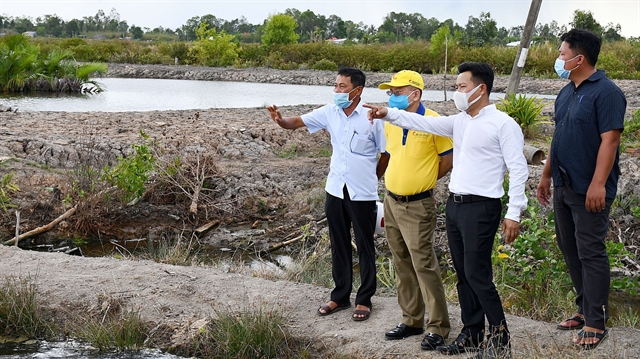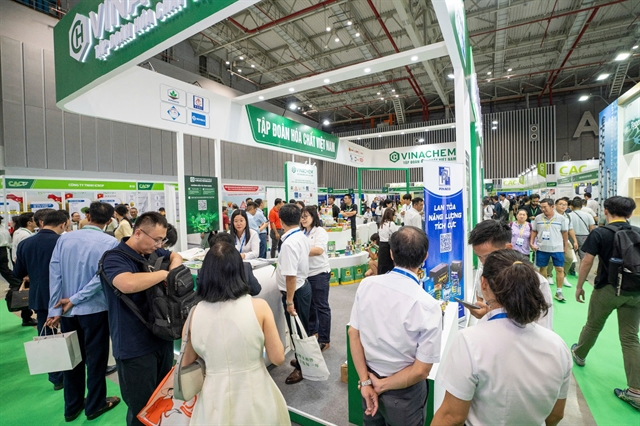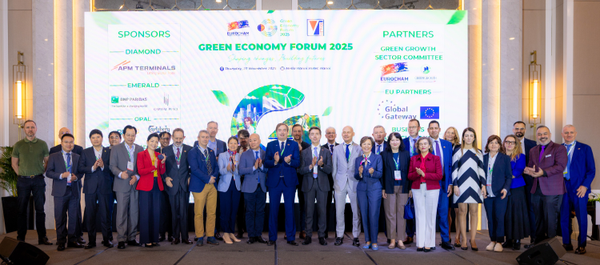 Society
Society


|
| Cà Mau Province officials visit Nguyễn Huế Hamlet in Thới Bình District’s Tân Bằng Commune where a model linking companies and farmers practising the shrimp – rice model is being piloted. — VNA/VNS Photo Kim Há |
CÀ MAU — The southernmost province of Cà Mau has expanded the areas under the shrimp-forest and shrimp-rice models to farm clean products for export and provide farmers with sustainable incomes.
It has 80,000ha of shrimp-forest areas in which shrimp are bred in mangrove forests and consume natural foods. This helps meet the requirements of choosy markets like the US, EU and Australia.
Cà Mau is bordered by the sea on three sides and has more than 100,000ha of mangrove forests.
It also has 50,000ha under the shrimp-rice model in which the crustacean is bred during the dry season and rice is planted in the rainy season on the same field. Shrimp is also farmed along with rice in many cases.
Under the two models, farmers use few chemicals.
They have helped many farming households earn steady incomes and escape poverty in recent years, according to the province’s Department of Agriculture and Rural Development.
The shrimp–forest model also helps conserve mangrove forests, it added.
Phạm Thị Ngọc Ánh, who farms shrimp in a mangrove forest in Năm Căn District’s Tam Giang Đông Commune, said in the past she had not been aware of the advantages of breeding shrimp in mangrove forests and paid little attention to the model, and so the creatures on her farm were often affected by diseases.
“Shrimp bred under the shrimp-forest farming model has few disease threats and offer high and steady incomes.”
Her family has been earning nearly VNĐ200 million (US$8,600) a year in recent years after adopting the model, she said.
Shrimp farmed in mangrove forests can be harvested in four months.
Besides shrimp, farmers also breed creatures like mud crabs and fish in mangrove forests.
Quách Văn Ấn, director of the province’s Investment Promotion and Enterprise Support Centre, said his agency has worked with 65 foreign investors in the last two years, and their interests include high-tech agriculture.
Many are keen on eco-tourism and agricultural tourism, and the province has made them part of its development strategy, developing farming of clean shrimp as a result, he said.
Bùi Thanh Phương, deputy chairman of the Đất Mũi Commune People’s Committee in Ngọc Hiển District, said the trend of living green and getting back to nature has created advantages for localities with mangrove forests that breed shrimp to develop eco-tourism.
The commune’s farmers are focusing on tourism, especially the ecological variety, and have great awareness of protecting mangrove forests and exploiting them sustainably, he said.
The commune offers tours for visitors to explore the mangrove forests.
Linkage
The province People’s Committee has allowed the Minh Phú Seafood Corporation and Lộc Trời Group to tie up with the Thới Bình District People’s Committee and other localities to implement on a pilot basis a link-up between companies and farmers adopting the shrimp-rice model.
It will first be implemented on nearly 75ha owned by 35 farmers in Thới Bình’s Tân Bằng Commune.
If it proves efficacious, the People’s Committee will expand it to other districts.
Thới Bình has 18,500ha under the model, the largest area in the province.
Farmers there breed black tiger shrimp or white-legged shrimp in the dry season and grow rice in the rainy season on the same fields.
Many have also been intercropping giant river prawns and rice for almost five years now.
To improve the efficiency of the model, district authorities have trained nearly 2,000 farmers since last year.
The district has also supported farmers by providing more than 500 tonnes of new, high-quality rice seeds.
The varieties, which include ST 25 and ST 24, two of the world’s best, have short maturity periods and can resist saltwater and drought. — VNS




